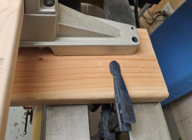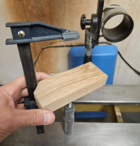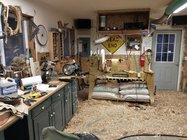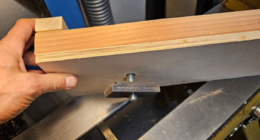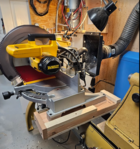I have a small (11'x19') shop that's set up well for woodturning. But I'm doing more flat work lately and things are pretty cramped. I'm always looking for more efficient ways to use space. Which brings me to my question.
How susceptible are cast iron surfaces to being permanently warped or distorted if they are subjected to uneven stress?
Here's an idea for locating my chop saw. I clamped a couple of 2x6's to the lathe ways then set the saw on top. Since the center of gravity for the saw, especially with a board on it, is past the edge of the bed, there will be some torque/twist on the ways. Could this cause problems? I don't foresee leaving things set up this way for long periods.
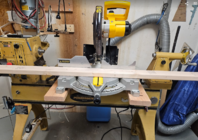
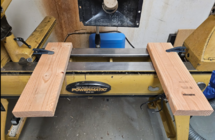
How susceptible are cast iron surfaces to being permanently warped or distorted if they are subjected to uneven stress?
Here's an idea for locating my chop saw. I clamped a couple of 2x6's to the lathe ways then set the saw on top. Since the center of gravity for the saw, especially with a board on it, is past the edge of the bed, there will be some torque/twist on the ways. Could this cause problems? I don't foresee leaving things set up this way for long periods.


Last edited:

